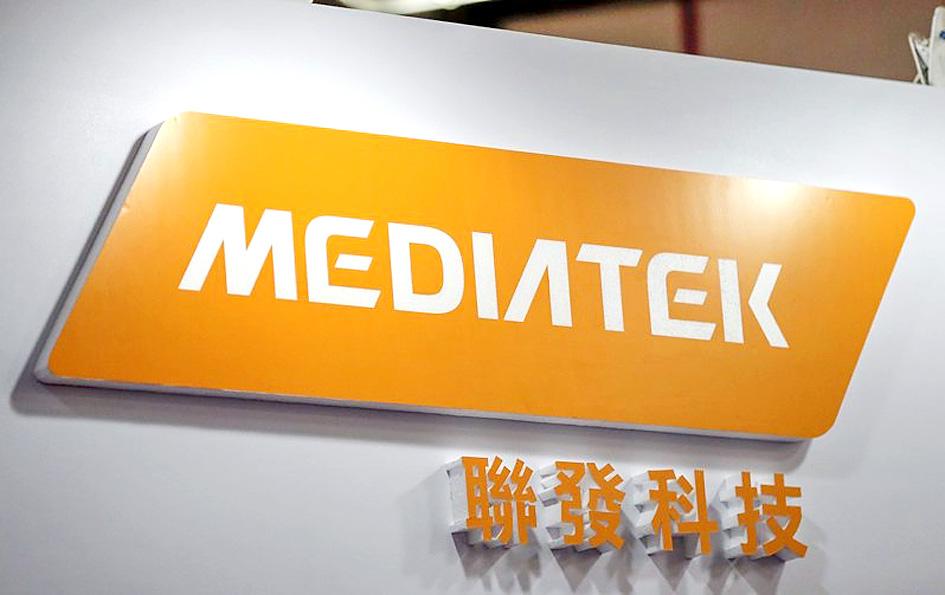MediaTek Inc (聯發科), the world’s biggest 5G chip supplier, saw its ranking rise by one notch to No. 7 last year among world semiconductor vendors, as it benefited from the rapid 5G smartphone uptake in China after Huawei Technologies Co (華為) was forced to exit the market, Gartner Inc said in a report yesterday.
MediaTek’s revenue soared 58.8 percent to US$17.45 billion last year from US$10.99 billion in 2020, outpacing the global semiconductor industry’s growth of 25 percent, according to Gartner’s tally. That gave MediaTek a 3 percent market share.
The Hsinchu-based chip company ranked No. 8 in 2020, behind Texas Instruments Inc.

Photo: EPA-EFE
“US sanctions on Huawei resulted in other Chinese smartphone original electronic manufacturers gaining share and fueling growth for 5G chipset vendors such as Qualcomm Inc, MediaTek and Skyworks Solutions Inc,” Gartner said.
HiSilicon Technologies Co (海思), Huawei’s chip designing subsidiary, saw its revenue decline from US$8.2 billion in 2020 to about US$1 billion last year, Gartner’s tallies showed.
Qualcomm ranked No. 5 last year, unchanged from the previous year. The San Diego, California-based company saw revenue jump 52.3 percent to US$26.86 billion last year from US$17.63 billion in 2020.
The 5G smartphone market was one of the major factors driving the world semiconductor industry’s revenue last year to US$583.5 billion, with production more than doubling to 555 million units last year from 250 million units in 2020, Gartner said.
“As the global economy bounced back in 2021, shortages appeared throughout the semiconductor supply chain, particularly in the automotive industry,” Gartner research vice president Andrew Norwood said.
“The resulting combination of strong demand, as well as logistics and raw material price increases, drove semiconductors’ average selling price higher, contributing to overall revenue growth in 2021,” he said.
Samsung Electronics Co grabbed the top spot for the first time since 2018, with revenue increasing 31.6 percent to US$75.95 billion last year.
Samsung’s memorychip revenue expanded 34.2 percent last year, in line with the growth rate of the overall memorychip market, Gartner said.
Intel Corp dropped to No. 2, with 0.5 percent growth in revenue last year to US$73.1 billion, delivering the lowest growth rate among the world’s top 25 semiconductor vendors.
Memorychip maker SK Hynix Inc came in next with revenue of US$36.33 billion last year, up 40.5 percent from a year ago.

RUN IT BACK: A succesful first project working with hyperscalers to design chips encouraged MediaTek to start a second project, aiming to hit stride in 2028 MediaTek Inc (聯發科), the world’s biggest smartphone chip supplier, yesterday said it is engaging a second hyperscaler to help design artificial intelligence (AI) accelerators used in data centers following a similar project expected to generate revenue streams soon. The first AI accelerator project is to bring in US$1 billion revenue next year and several billion US dollars more in 2027, MediaTek chief executive officer Rick Tsai (蔡力行) told a virtual investor conference yesterday. The second AI accelerator project is expected to contribute to revenue beginning in 2028, Tsai said. MediaTek yesterday raised its revenue forecast for the global AI accelerator used

Taiwan Semiconductor Manufacturing Co (TSMC, 台積電) has secured three construction permits for its plan to build a state-of-the-art A14 wafer fab in Taichung, and is likely to start construction soon, the Central Taiwan Science Park Bureau said yesterday. Speaking with CNA, Wang Chun-chieh (王俊傑), deputy director general of the science park bureau, said the world’s largest contract chipmaker has received three construction permits — one to build a fab to roll out sophisticated chips, another to build a central utility plant to provide water and electricity for the facility and the other to build three office buildings. With the three permits, TSMC

The DBS Foundation yesterday announced the launch of two flagship programs, “Silver Motion” and “Happier Caregiver, Healthier Seniors,” in partnership with CCILU Ltd, Hondao Senior Citizens’ Welfare Foundation and the Garden of Hope Foundation to help Taiwan face the challenges of a rapidly aging population. The foundation said it would invest S$4.91 million (US$3.8 million) over three years to foster inclusion and resilience in an aging society. “Aging may bring challenges, but it also brings opportunities. With many Asian markets rapidly becoming super-aged, the DBS Foundation is working with a regional ecosystem of like-minded partners across the private, public and people sectors

BREAKTHROUGH TECH: Powertech expects its fan-out PLP system to become mainstream, saying it can offer three-times greater production throughput Chip packaging service provider Powertech Technology Inc (力成科技) plans to more than double its capital expenditures next year to more than NT$40 billion (US$1.31 billion) as demand for its new panel-level packaging (PLP) technology, primarily used in chips for artificial intelligence (AI) applications, has greatly exceeded what it can supply. A significant portion of the budget, about US$1 billion, would be earmarked for fan-out PLP technology, Powertech told investors yesterday. Its heavy investment in fan-out PLP technology over the past 10 years is expected to bear fruit in 2027 after the technology enters volume production, it said, adding that the tech would